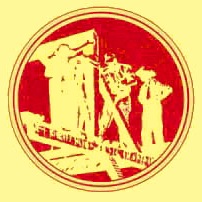A Just So Story |
 |
Once upon a time, we wrote a book called A Pattern Language and that is how we got our name.
Now, a pattern is an old idea. The new idea in the book was to organize implicit knowledge about how people solve recurring problems when they go about building things.
For example, if you are building a house you need to go from outside to inside and there are centuries of experiments on how to do this in a "just so" way. Sometimes the transition is marked not by just a door but by a change in elevation (steps, large, small, straight, or curved), or a shaded path, or through a court yard.
We wrote up this knowledge in the form of a pattern about entrance transitions.
Patterns are easy to remember and set out as if-then propositions.
The book gave 253 patterns about solutions that are known to work.

People liked our book very much. We were surprised though, when we found out computer programmers liked it, because it was about building not programming. But the programmers said, "this is great, it helps think about patterns in programming and how to write reusable code that we can call upon when we need it."
The 253 patterns are now on the website, you can browse through them, use them, think about them.

Now a pattern language is about patterns being like words. They stay the same but can be combined in different ways like words in a sentence. They can be used as in a network where one will call upon another (like a neuron network). When you build something you can put patterns together to form a language. So a language for your house might have patterns about transitions, light, ceiling height, connecting the second floor to the ground.
A community might put together a language including patterns about public and private spaces, cars, pedestrians and parking. Using languages helps you to visualize and think about what will really make you comfortable, really comfortable.
Good languages are in harmony with geography, climate, and culture.
The website shows you some examples of languages so you can start to do your own.

Then what happened is we tried building buildings not just writing down known solutions. What something looks like actually depends on how it is made. If you watch raindrops fall off the tree, you can see that the tear drop shape is formed over time and couldn't get that shape any other way.
If you look at corn kernels on the cob, you can see that the kernels are not quite straight or even but have grown to fit just so on the cob. It's why we enjoy things that are hand made and find mass produced widgets so boring and would like a house that fits just so in the landscape, and like a jewel, brings forth the charm of the landscape itself.

So all our attention was on understanding process, how things unfolded and got made so that each part was unique and had a just so rightness in the way it fit.
Then more books. One book. It grew to two. It grew to three. It grew to four. And then we all said "stop". That's enough.
So we have four. The quartet of books is called The Nature of Order.
A lot of material from these books is on the web.

But what we're working most hard at is writing sequences. Now a sequence is something that looks very very simple and is actually very very difficult. It's more than a pattern; it's an algorithm about process. But what is possible is to write sequences so that they are easy. You follow the steps in a sequence like you follow the steps in a cooking recipe.
You can make a cheese souffle and you don't have to understand the chemical transformations that happen to the egg as it gets cooked. You still get a souffle.
You can look at the short demo sequence we made about entrance transitions.
A sequence is like a bit of genetic code. It helps things to unfold in the right way. An human embryo follows steps as it grows, and if it misses a step then there is a malformation. But ten embryos following the same sequence well leads to ten very different people, each one unique.
A sequence means a different process.

Normally what happens when you build a house, for example, is that an architect, tries more or less or understand what you want and makes a blueprint. But a blueprint and CAD designs are mostly guess work about what is going to be just right for the dimension of a room or the placement of a window. It's like tossing thirty coins all at once and hoping they all land on heads. Never works. A sequence is figuring out which decision has to come first and getting it right and then moving to a second decision. Like tossing one coin at a time, which is actually a much better, faster, and less expensive way to get to thirty coins all on heads. But if you work from a blueprint you are stuck with your guesses and the builders, who aren't the architect, just have to follow the blueprint, even when they know a much better solution. It's a silly way to do things.

Websites are wonderful because now so many people from so many walks of life and in so many places can use these sequences and if lots of people use them, they will have what really makes them comfortable, and our built environment will become a more beautiful place.
And that's how pattern language became dot com.
